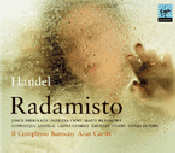=====================================================================
Monthly Theme
This month,
all of our Friday posts present “One-Work Montages”, that is a single work,
without any filler. The first in this series, Mahler’s Third Symphony is also
the 150th in our ongoing podcast series, and thus gets “extended
podcast” treatment, lasting over 1 hour and three quarters! In addition, the
musical selections also continue our sacred work and organ music programming
for Lent.
- April 4: Mahler’s Third in an award-winning performance by Leonard Bernstein and the New-York Philharmonic, joined by Christa Ludwig and the required pair of choruses. http://itywltmt.blogspot.com/2014/04/montage-150-mahlers-third-symphony.html
- April 11 – Verdi’s Requiem in the version recorded by Claudio Abbado and the Berlin Philharmonic, the Swedish Radio Choir and soloists, issued for the centennial of Verdi’s death in 2001. http://itywltmt.blogspot.com/2014/04/montage-151-verdi-messa-da-requiem.html
- April 18 – Méditations sur le Mystère de la Sainte-Trinité performed on the great Cavaillé-Coll Organ at La Trinité in Paris by the composer, Olivier Messiaen. http://itywltmt.blogspot.com/2014/04/montage-152-meditations-sur-le-mystere.html
- April 25 – A Faust Symphony in a live performance by the Royal Concertgebouw Orchestra of Amsterdam under Antal Dorati. http://itywltmt.blogspot.com/2014/04/montage-153-eine-faust-symphonie.html
Pierre’s Tuesday Blog
- April 1- Pierre’s Podcast Vault Selection of the Month. Our montage from March 2013 features
Berlioz’s Requiem performed by Staatskapelle Dresde under Sir Colin Davis.The montage is presented on our Pod-O-Matic Channel until April 30. http://www.talkclassical.com/blogs/itywltmt/1437-berliozs-grande-messe-des.html - April 8 – Virgil Fox in Recital – A YouTube complete concert performance of one of Fox’s last concerts, his "Return to Riverside" appearance - May 6, 1979... 'back where it all began'. http://www.talkclassical.com/blogs/itywltmt/1440-virgil-fox-recital.html
- April 15 – Once Upon the Internet – Wilhelm Furtwangler and the Vienna Philharmonic perform Bruckner’s Symphony No. 5 at the Salzburg Festival in August 1951. http://www.talkclassical.com/blogs/itywltmt/1441-bruckners-fifth.html
- April 22 – The Musical Offering – The complete work, from YouTube. http://www.talkclassical.com/blogs/itywltmt/1445-das-musikalische-opfer.html
- April 29- La Chronique du Disque. Operetta, Organ and Naxos releases. http://www.talkclassical.com/blogs/itywltmt/1446-la-chronique-du-disque.html
Once or Twice a Fortnight
I plan both
my OTF contributions this month to be “tandem” posts of the Mahler’sThird and Faust Symphony podcasts.
NOTE: Since OTF posts do not get published on set dates, make sure to visit OperaLively regularly or …
Ssubscribe to our ITYWLTMT Fan Page on Facebook
All of our Tuesday, Friday and ad-hoc posts, as well as OTF and YouTube Channel updates get regularly mentioned (with links) on our Fan Page. If you are a user of Facebook, simply subscribe to get notified so you never miss anything we do!




